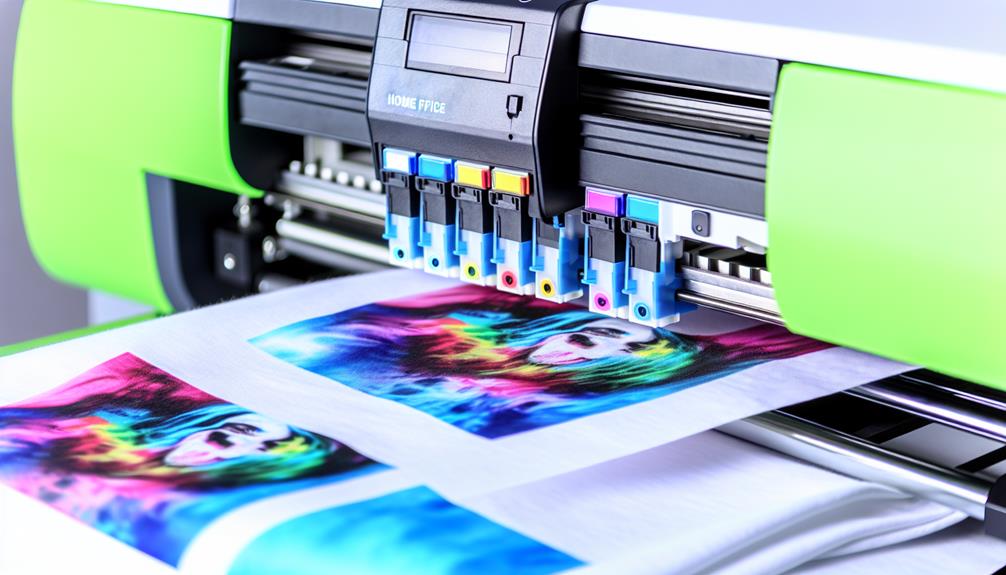
“DTF vs Sublimation: Which Technique is Best for Your Projects?”
Introduction
In the ever-evolving world of printing technologies, two methods stand out for their effectiveness and versatility: DTF (Direct to Film) printing and sublimation. Both techniques have carved out a niche in the realm of custom apparel, promotional products, and various other applications. This article will dive deep into the nuances of “DTF vs Sublimation: Which Technique is Best for Your Projects?” to help you make an informed decision based on your unique requirements.
Understanding DTF Printing
What is DTF Printing?
DTF printing, or Direct to Film printing, involves transferring designs onto a special film before applying them to the fabric. The process entails several steps: printing the design onto a film using a direct-to-film printer, applying adhesive powder, curing it with heat, and finally pressing it onto the garment. This method allows for vibrant colors and intricate designs.

How Does DTF Transfer Work?
The DTF transfer technique allows you to print high-quality images directly onto a film that can be easily transferred onto various surfaces. The key advantages include its ability to handle multiple colors without compromising quality.

Benefits of DTF Printing
Versatile Application
One of the standout features of DTF printing is its capability to print on various fabrics, including cotton, polyester, DTF transfer printing and blends. Whether you're looking to create t-shirts or bags, DTF transfers are incredibly versatile.
High-Quality Output
The quality of DTF prints is exceptional, allowing for detailed designs that maintain their vibrancy even after multiple washes. This makes it ideal for commercial use where durability is essential.
Cost-Effective Solution
For those seeking affordable options in custom designs, DTF offers cost-effective solutions without sacrificing quality. With services like Affordable DTF Printing, businesses can achieve high-quality results without breaking the bank.
DTF heat transfersExploring Sublimation Printing
What is Sublimation Printing?
Sublimation is a heat transfer method that converts solid dye into gas without passing through a liquid state. The dye penetrates the fabric fibers deeply, resulting in vibrant and long-lasting designs.
How Does Sublimation Transfer Work?
Sublimation involves printing a design onto special transfer paper using sublimation ink. Heat and pressure are then applied to convert the ink into gas that bonds with polyester fibers or specially coated substrates.
Benefits of Sublimation Printing
Vibrant Colors and Detail
One of sublimation's standout features is its ability to produce incredible color saturation and detail. Prints made through this method appear almost lifelike on garments.
Durability Against Fading
Sublimated designs become part of the fabric itself rather than sitting on top as with some other methods. This means that they won’t crack or peel over time; instead, they remain vibrant even after numerous washes.
Comparing DTF and Sublimation Techniques
Print Quality: DTF vs Sublimation
When comparing print quality between these two techniques:
- DTF Prints: Excellent detail but may not match sublimation's depth.
- Sublimation: Superior vibrance but limited to polyester fabrics or specially treated surfaces.
Cost Analysis: Is One Method Cheaper?
In terms of costs:
- DTF Transfers: Generally lower initial investment but may require additional materials like adhesive powders.
- Sublimation: Higher equipment costs but often less material waste in production runs.
Which Technique Is More Versatile?
When it comes down to versatility:
- DTF can be used on both light and dark fabrics.
- Sublimation works best on white or light-colored polyester fabrics only.
DTF vs Sublimation: Which Technique is Best for Your Projects?
Choosing between DTF and sublimation boils down to your specific needs—what kind of projects you’re working on, your budget constraints, wholesale DTF transfers fabric choices, and desired longevity of prints all play critical roles in your decision-making process. If you're looking for affordability along with the option to print on diverse materials—including darker fabrics—then DTF might just be your best bet! Conversely, if you're solely focused on vibrant imagery on light-colored fabrics that won’t fade over time, sublimation could be your go-to solution.
FAQs
1. What materials can I use with DTF printing?
You can use various materials including cotton blends, polyester blends, leather, nylon fabrics among others which makes it quite flexible compared to other methods like heat transfer printing.
2. Is sublimation only effective on specific colored fabrics?
Yes! Sublimation works best with white or light-colored polyester substrates because dark fabrics cannot effectively absorb sublimated dyes without losing vibrancy.
3. Can I achieve high-quality prints with Affordable DTF Printing services?
Absolutely! Many services offer competitive pricing while maintaining high-quality output—perfect for small businesses looking for wholesale solutions without compromising quality!
4. How durable are prints from each technique?
Both methods offer good durability; however:
- DTF prints may experience some cracking over time if not properly cared for.
- Sublimated prints typically maintain color integrity longer since they bond with fibers during application.
5. What’s the best choice if I want detailed graphics?
If detailed graphics are what you’re after—and you're working primarily with light-colored materials—sublimation would likely give you superior results due to its capacity for high-resolution imaging!
6. Are there any limitations when using UV DTF transfers?
While UV technology allows more flexibility concerning color application across surfaces (including rigid items), it's generally considered more expensive than traditional methods thus impacting overall project budgeting!
Conclusion
In conclusion, both DTF and sublimation have their pros and cons depending upon your specific project needs—from fabric compatibility to custom DTF transfers pricing structures involved within each respective technique! As we’ve explored in this comprehensive guide addressing “ DTF vs Sublimation: Which Technique is Best for Your Projects?”, understanding these differences can empower you as an informed consumer ready to take advantage of custom design opportunities available today! So whether you're diving into commercial ventures or heat transfer vinyl personal projects at home—evaluate carefully before deciding which route suits you best!
